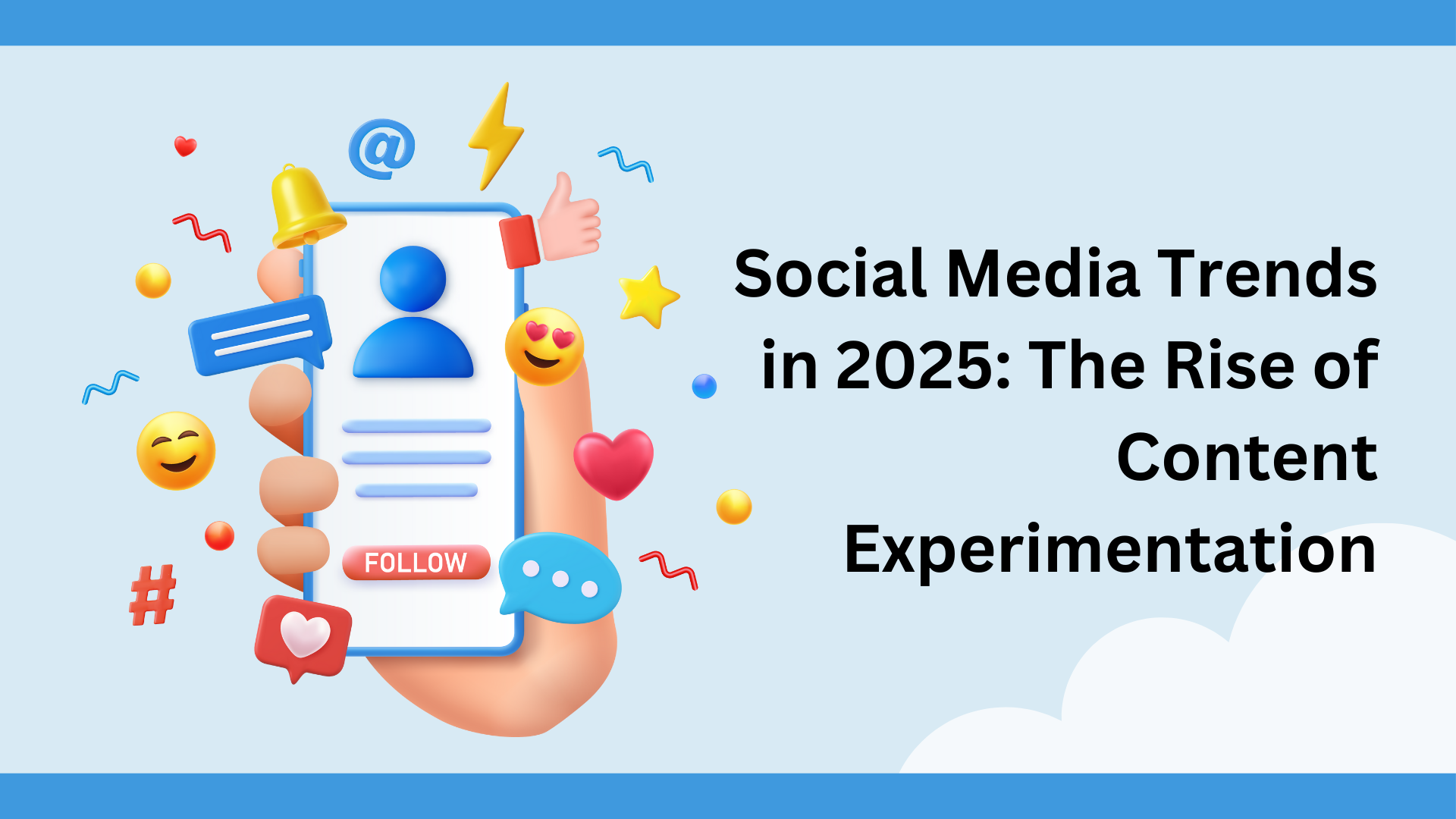Algorithms aren’t just shifting; they’re sprinting. Users scroll past more posts than ever, and if you’re relying on static updates or playing it safe, you risk getting lost in the feed. In 2025, social media belongs to the fearless—brands that test new formats, take a few risks, and adapt faster than the platforms can update their code.
Why Content Experimentation is Critical in 2025
Social media is no longer a space to simply broadcast content; it’s a living, breathing ecosystem where authenticity trumps polish. Staying relevant means getting creative, failing fast, and learning even faster.
Here’s why content experimentation is becoming a non-negotiable strategy:
- Algorithm Shifts Favor New Formats – Platforms like Instagram, TikTok, and LinkedIn are prioritizing newer content types (like Reels and carousels) over traditional posts.
- Audience Fatigue – Users are exposed to more content than ever. Novelty and creativity are key to standing out.
- Increased Competition – Every brand is on social media. Unique, experimental content is the best way to rise above the noise.
- Shorter Attention Spans – With average attention spans shrinking, content needs to be more engaging and immediate to capture interest.
Brands that are willing to test new formats and adapt quickly will have the upper hand in 2025.
Top Social Media Trends for 2025
Content experimentation is at the core of the biggest social media trends this year. Here’s what’s driving engagement and reshaping platforms:
1. AI-Generated Content & Automation
AI isn’t just helping brands create content faster—it’s making content smarter.
- AI tools like ChatGPT, Jasper, and Copy.ai can generate social media copy, captions, and even personalized responses at scale.
- Automated content creation allows brands to test different versions of posts and identify what resonates most with their audience.
- AI-driven insights help refine tone, style, and timing for maximum engagement.
Strategy Tip: Use AI to generate variations of posts and A/B test them to identify top-performing formats.
2. Short-Form Video Dominance
Video content is the current king of the hill, especially bite-sized clips that get to the point—or entertain—fast.
- TikTok, Instagram Reels, and YouTube Shorts remain the most engaging content formats.
- Brands are experimenting with behind-the-scenes clips, product demos, and user-generated content to drive authenticity.
- Interactive elements (like polls, Q&A stickers, and live reactions) are increasing engagement and keeping users hooked.
Strategy Tip: Test different video lengths and styles—use AI to analyze which format drives the most engagement.
3. Mixed Media & Layered Content
Static images are out—layered, mixed-media content is in.
- Brands are combining text overlays, animations, and graphics with video and photo content.
- “Carousel storytelling” on Instagram and LinkedIn is becoming a preferred format for delivering complex information.
- Brands are using mixed media to create more engaging and memorable experiences.
Strategy Tip: Create carousels that tell a story, combining images, text, and video for a more immersive experience.
4. Rise of Niche Platforms & Communities
Users are moving beyond mainstream platforms to find more personalized communities.
- Platforms like BeReal, Discord, and Geneva are gaining traction as users seek more intimate, authentic spaces.
- Niche communities foster deeper engagement and brand loyalty.
- Brands that build direct relationships with niche audiences can create more targeted and effective campaigns.
Strategy Tip: Build brand-specific communities on smaller platforms and experiment with exclusive content to drive engagement.
5. Social Commerce Integration
Social media is becoming a marketplace, not just a marketing tool.
- Platforms like Instagram, TikTok, and Pinterest now offer direct shopping features.
- Live shopping events are driving real-time conversions.
- Influencers and brand ambassadors are playing a key role in social commerce growth.
Strategy Tip: Test live shopping events and influencer partnerships to see which products and formats generate the highest ROI.
How to Experiment with Content in 2025
Content experimentation isn’t about throwing things at the wall and hoping something sticks, it’s about testing strategically and learning from the results.
1. A/B Test Different Formats
- Test video vs. static posts vs. carousel content.
- Try different video lengths, styles, and tones.
- Monitor engagement rates and adjust based on real-time feedback.
2. Vary Posting Times & Frequencies
- Post at different times of day to identify when your audience is most active.
- Test how frequently you post to find the sweet spot between visibility and oversaturation.
3. Analyze and Iterate
- Track performance using built-in platform analytics and third-party tools like Hootsuite and Sprout Social.
- Double down on what works, eliminate what doesn’t.
- Adapt your strategy based on changing trends and algorithm updates.
Mistakes to Avoid
Not all experiments will succeed—here’s how to avoid common pitfalls:
- Overproducing Content – More isn’t always better. Focus on quality over quantity.
- Ignoring Data – If a format isn’t working, don’t force it. Let data guide your decisions.
Staying Too Safe – Experimentation requires a level of risk. Don’t be afraid to try bold, creative ideas.





Leave a Comment